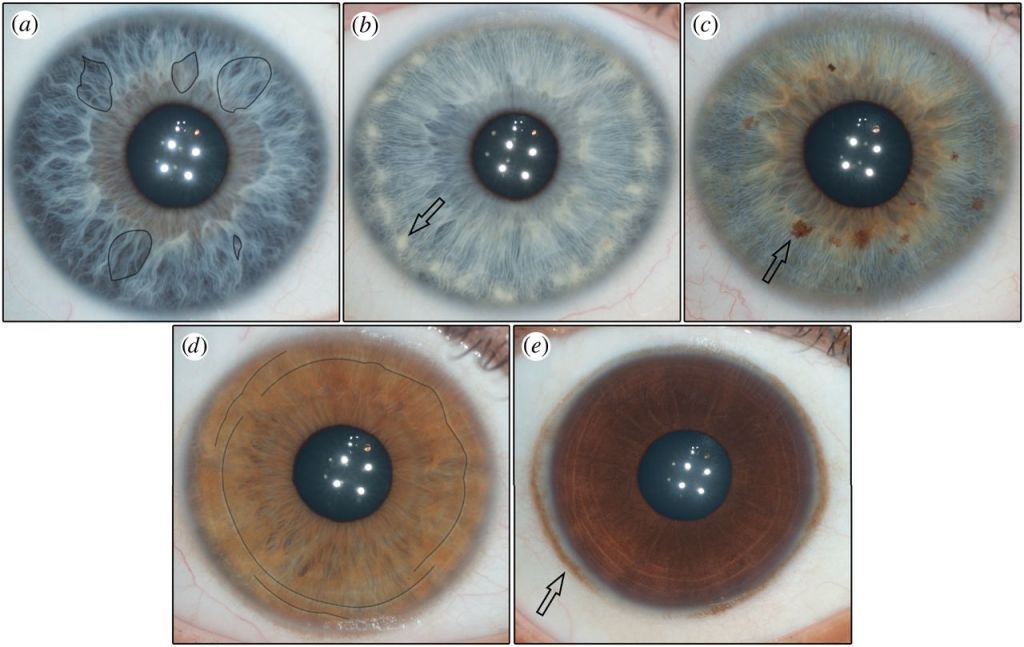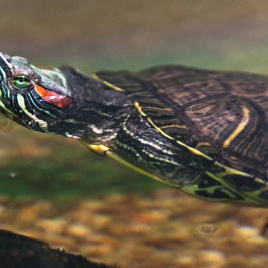
“The five features found most commonly in the human iris. ” Fuchs’ crypts (a), wolfflin nodules (b), pigment spots (c), contraction furrows (d), and conjunctival melanosis (e). (Image credit: Edwards et al., The Royal Society Publishing)
Features on the surface of the iris vary widely between individuals of different ancestral groups, according to a new study.
Researchers developed a computer program to help identify a variety of features on the iris of subjects with either East Asian, South Asian, or European ancestry. This program allows for a more qualitative assessment than the tradition methods of photograph analysis, according to the researchers.
The research team found that features of the iris are largely population dependent, however they found no correlation between iris features and age.
Original research paper published in Royal Society Open Science on January 13, 2015.
Names and affiliations of selected author

